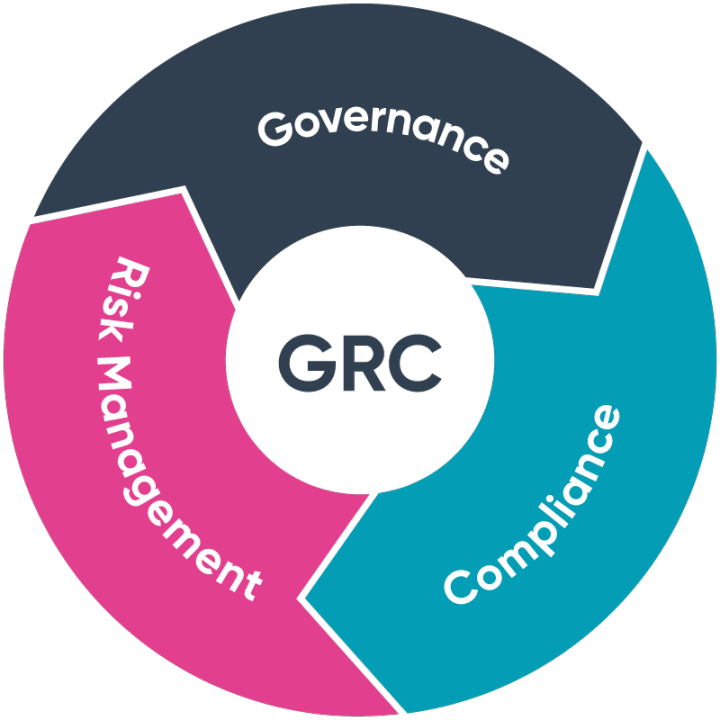
A How-To Guide for Creating a GRC (Governance, Risk, Compliance) Program
In today’s complex and rapidly changing business landscape, organizations are faced with a multitude of challenges. From cybersecurity threats to regulatory compliance, managing risks and ensuring effective governance has become more critical than ever. This is where a well-structured Governance, Risk, and Compliance (GRC) program comes into play. In this comprehensive guide, we will walk you through the process of creating a GRC program that helps your organization navigate these challenges and thrive in a highly regulated and dynamic environment.
Understanding GRC
Before diving into the process of creating a GRC program, it’s essential to have a clear understanding of what GRC is and why it matters.
Governance: Governance refers to the set of policies, processes, and practices that an organization uses to ensure that it operates efficiently, ethically, and in line with its strategic objectives. It involves decision-making, accountability, and oversight.
Risk Management: Risk management involves identifying, assessing, and mitigating risks that could potentially impact an organization’s ability to achieve its objectives. This includes financial risks, operational risks, cybersecurity risks, and more.
Compliance: Compliance refers to an organization’s adherence to laws, regulations, industry standards, and internal policies. Failure to comply with these requirements can result in legal and financial consequences.
A GRC program is a holistic approach that integrates these three components to ensure that an organization operates effectively, manages risks, and complies with all relevant regulations.
Step 1: Establish Clear Objectives
The first step in creating a GRC program is to define clear objectives. What do you want to achieve with your GRC program? Your objectives should align with your organization’s overall strategic goals. Some common GRC objectives include:
- Enhancing Governance: Strengthening decision-making processes, accountability, and transparency within the organization.
- Mitigating Risks: Identifying and minimizing risks that could impact the achievement of strategic objectives.
- Ensuring Compliance: Ensuring that the organization complies with all applicable laws, regulations, and industry standards.
- Improving Efficiency: Streamlining GRC processes to reduce costs and improve operational efficiency.
- Protecting Reputation: Safeguarding the organization’s reputation by proactively managing risks and compliance issues.
- Facilitating Growth: Supporting business growth and expansion by effectively managing risks and compliance requirements.
By defining clear objectives, you provide a roadmap for your GRC program and establish a basis for measuring its success.
Step 2: Identify Key Stakeholders
Successful GRC programs require the active involvement of various stakeholders within and outside the organization. Identify key stakeholders who will play a role in the development and execution of your GRC program. These may include:
Executive Leadership: The senior management team should champion the GRC program and provide the necessary resources and support.
Board of Directors: The board should oversee the program’s effectiveness and ensure alignment with strategic objectives.
Compliance Officers: These individuals are responsible for monitoring and ensuring compliance with laws and regulations.
Risk Managers: Risk management professionals assess and mitigate risks that could impact the organization.
IT Security Teams: Cybersecurity experts play a crucial role in protecting against data breaches and cyber threats.
Legal Counsel: Legal experts can provide guidance on complex regulatory issues and legal compliance.
Internal Auditors: Internal auditors assess the effectiveness of GRC processes and controls.
Engage these stakeholders early in the process to gain their perspectives and secure their commitment to the GRC program.
Step 3: Conduct a Risk Assessment
A comprehensive risk assessment is a fundamental element of any GRC program. Identify and evaluate the risks that your organization faces, including financial, operational, strategic, and compliance risks. Consider both internal and external factors that could impact your organization. The risk assessment process typically involves the following steps:
- Risk Identification: Identify potential risks and vulnerabilities that could affect your organization. This may include conducting a SWOT analysis (Strengths, Weaknesses, Opportunities, Threats) and reviewing historical data.
- Risk Assessment: Assess the likelihood and potential impact of each identified risk. This helps prioritize risks based on their significance.
- Risk Mitigation: Develop strategies and controls to mitigate and manage identified risks. This may involve implementing security measures, creating backup plans, or purchasing insurance.
- Monitoring and Review: Continuously monitor and review the effectiveness of risk mitigation measures. Risks change over time, so your GRC program must adapt accordingly.
Step 4: Define Policies and Procedures
Once you have a clear understanding of your organization’s objectives and risks, it’s time to define the policies and procedures that will govern your GRC program. These policies and procedures should cover:
Governance: Define decision-making processes, roles, and responsibilities within the organization. Establish clear lines of accountability.
Risk Management: Outline the processes for identifying, assessing, and mitigating risks. Specify risk tolerance levels and escalation procedures.
Compliance: Document the laws, regulations, and industry standards that your organization must adhere to. Create procedures for monitoring and ensuring compliance.
Data Security: Develop security policies and procedures to protect sensitive data from breaches and unauthorized access.
Incident Response: Define how the organization will respond to GRC-related incidents, such as data breaches or compliance violations.
Ensure that these policies and procedures are well-documented, easily accessible to all stakeholders, and regularly updated to reflect changes in regulations and risks.
Step 5: Implement GRC Software
To effectively manage and automate your GRC processes, consider implementing GRC software. GRC software solutions are designed to streamline governance, risk management, and compliance activities. They provide a centralized platform for:
Risk Assessment: Conduct risk assessments, prioritize risks, and track mitigation efforts.
Compliance Management: Manage compliance requirements, track changes in regulations, and automate compliance checks.
Incident Management: Streamline incident reporting, investigation, and resolution processes.
Reporting and Analytics: Generate reports and dashboards to monitor the effectiveness of your GRC program and communicate with stakeholders.
Choose a GRC software solution that aligns with your organization’s specific needs and objectives.
Step 6: Training and Awareness
Education and awareness are essential components of a successful GRC program. Ensure that all employees are trained on the policies and procedures related to governance, risk management, and compliance. This includes:
Compliance Training: Educate employees about relevant laws, regulations, and industry standards that apply to their roles.
Security Training: Provide training on cybersecurity best practices to prevent data breaches and security incidents.
Risk Awareness: Promote a culture of risk awareness by encouraging employees to report potential risks and issues.
GRC Training: Train employees on how to use GRC software and tools effectively.
Regular training and awareness programs help foster a GRC-conscious culture within the organization.
Step 7: Continuous Monitoring and Improvement
Creating a GRC program is not a one-time task; it’s an ongoing process. Continuously monitor and assess the effectiveness of your GRC program. This involves:
Regular Audits: Conduct internal audits to evaluate the performance of GRC processes and controls.
Key Performance Indicators (KPIs): Define and track KPIs to measure the program’s success and alignment with objectives.
Feedback and Improvement: Gather feedback from stakeholders and employees to identify areas for improvement. Use this feedback to refine your GRC program over time.
Adapt to Change: Stay vigilant for changes in regulations, industry trends, and emerging risks. Adjust your GRC program as needed to address new challenges.
By continually improving your GRC program, you can adapt to evolving threats and regulatory requirements effectively.
Step 8: Reporting and Communication
Effective communication is crucial for the success of your GRC program. Regularly report on the status of your GRC initiatives to key stakeholders, including the board of directors, executive leadership, and compliance officers. Use clear and concise reporting formats that highlight key metrics and achievements. Effective communication ensures that all stakeholders are informed and engaged in the GRC process.
Conclusion
Creating a Governance, Risk, and Compliance (GRC) program is a strategic imperative for organizations seeking to thrive in today’s complex business environment. By following the steps outlined in this guide, you can establish a robust GRC program that enhances governance, mitigates risks, ensures compliance, and ultimately contributes to the long-term success of your organization. Remember that GRC is an ongoing process that requires commitment, adaptability, and a culture of accountability.
Contact Cyber Defense Advisors to learn more about our Governance Risk Compliance (GRC) solutions.




